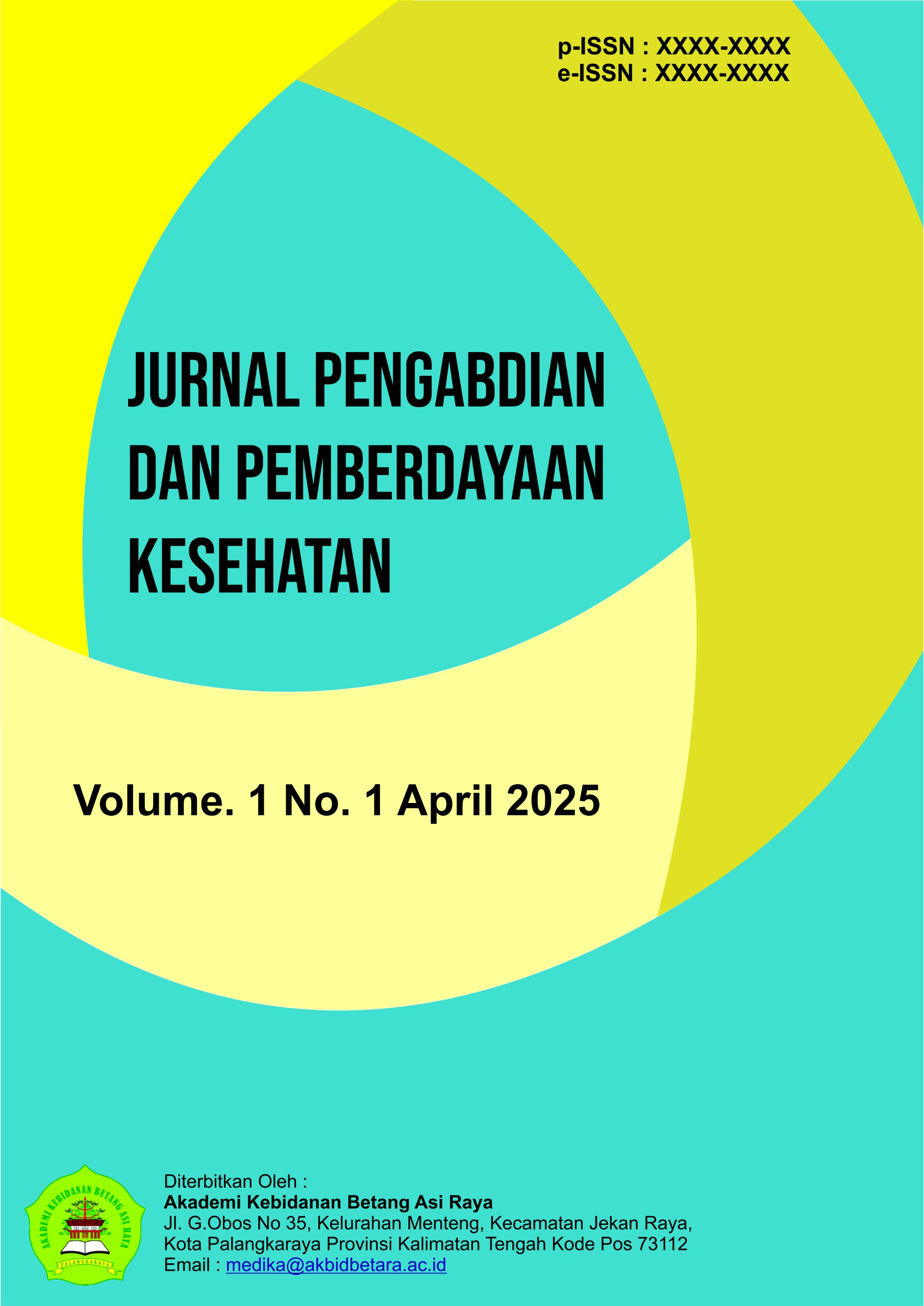Deteksi Dini Resiko Jatuh Pada Lansia di Puskesmas Kelurahan Menteng Palangka Raya untuk Meningkatkan Kesejahteraan Pada Lansia
Keywords:
lansia, risiko jatuh, deteksi dini, kesejahteraan lansia, palangka rayaAbstract
The increasing elderly population in Indonesia, particularly in Palangka Raya City, presents various health challenges including fall risk that can lead to morbidity and mortality. This community service activity aimed to conduct early detection of fall risk among the elderly in the working area of Menteng Community Health Center, Palangka Raya. The method used was observational assessment using the Timed Up and Go Test (TUG), Berg Balance Scale (BBS), and fall risk factor questionnaire. Results showed that 42.5 percent of elderly had high risk for falls based on TUG results (greater than 14 seconds), 38.2 percent had poor balance based on BBS (less than 45), and the main risk factors identified were muscle weakness, vision impairment, and unsafe environmental conditions. Interventions included fall prevention education, balance exercises, and environmental modifications. Post-intervention evaluation showed improved knowledge among the elderly about fall risks and prevention methods. This activity successfully increased awareness among the elderly and their families about the importance of early detection of fall risk and can serve as a model for similar programs in other regions
References
Ambrose, A. F., Paul, G., & Hausdorff, J. M. (2021). Risk factors for falls among older adults: A review of the literature. Maturitas, 75(1), 51-61.
Badan Pusat Statistik. (2023). Statistik penduduk lanjut usia Indonesia 2023. Jakarta: Badan Pusat Statistik.
Dinas Kesehatan Kota Palangka Raya. (2023). Profil kesehatan Kota Palangka Raya tahun 2023. Palangka Raya: Dinas Kesehatan Kota Palangka Raya.
Gillespie, L. D., Robertson, M. C., Gillespie, W. J., Sherrington, C., Gates, S., Clemson, L. M., & Lamb, S. E. (2021). Interventions for preventing falls in older people living in the community. Cochrane Database of Systematic Reviews, 9, CD007146.
Nari, F., Supriyadi, T., & Kusuma, H. (2022). Faktor-faktor yang mempengaruhi kejadian jatuh pada lansia di masyarakat: Systematic review. Jurnal Keperawatan Indonesia, 25(1), 43-52.
Pratama, K. A., Wijaya, S., & Hartini, S. (2023). Peran dukungan keluarga dalam pencegahan jatuh pada lansia: Studi cross-sectional. Jurnal Keperawatan Soedirman, 18(2), 112-121.
Prasetya, D., & Hartini, S. (2023). Prevalensi dan faktor risiko jatuh pada lansia di komunitas: Studi kasus di Yogyakarta. Jurnal Kesehatan Masyarakat Indonesia, 8(3), 220-229.
Ramlis, R., Supriyanto, A., & Hadi, S. (2022). Penilaian risiko jatuh pada lansia menggunakan Timed Up and Go Test: Studi di Posyandu Lansia Kabupaten Malang. Jurnal Ilmiah Kesehatan, 14(2), 178-187.
Sherrington, C., Fairhall, N., Wallbank, G., Tiedemann, A., Michaleff, Z. A., Howard, K., & Clemson, L. (2020). Exercise for preventing falls in older people living in the community: An updated Cochrane systematic review. British Journal of Sports Medicine, 54(15), 885-891.
Wijaya, A. S., & Santoso, D. (2022). Efektivitas aplikasi smartphone dalam meningkatkan kepatuhan latihan pencegahan jatuh pada lansia. Jurnal Teknologi Kesehatan, 10(2), 156-165.
World Health Organization. (2021). WHO global report on falls prevention in older age. Geneva: World Health Organization.
Yulitasari, B. I., Amatria, R., & Nugroho, P. S. (2022). Efektivitas program pencegahan jatuh pada lansia berbasis komunitas: Systematic review. Jurnal Keperawatan dan Kebidanan, 13(1), 23-34.



